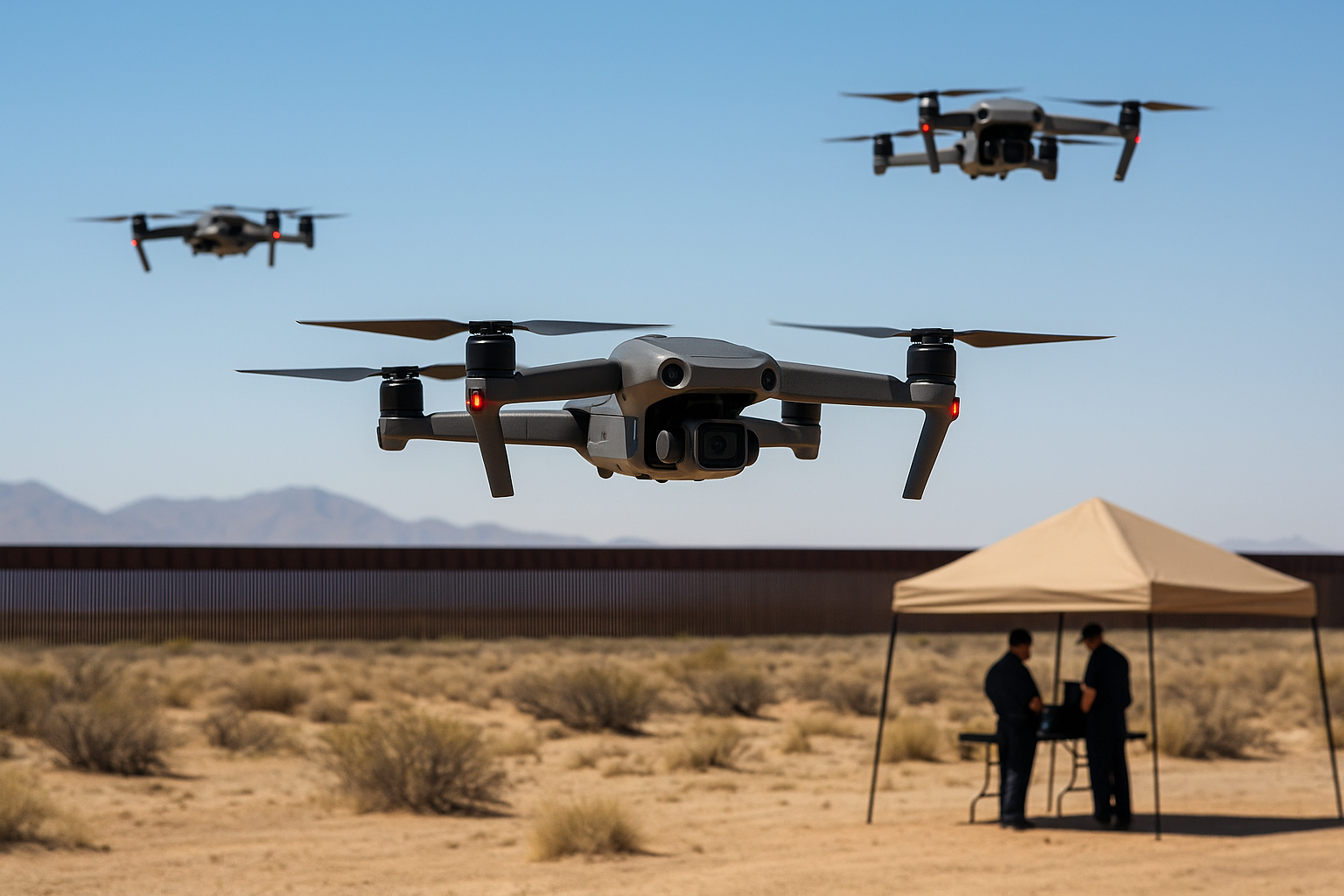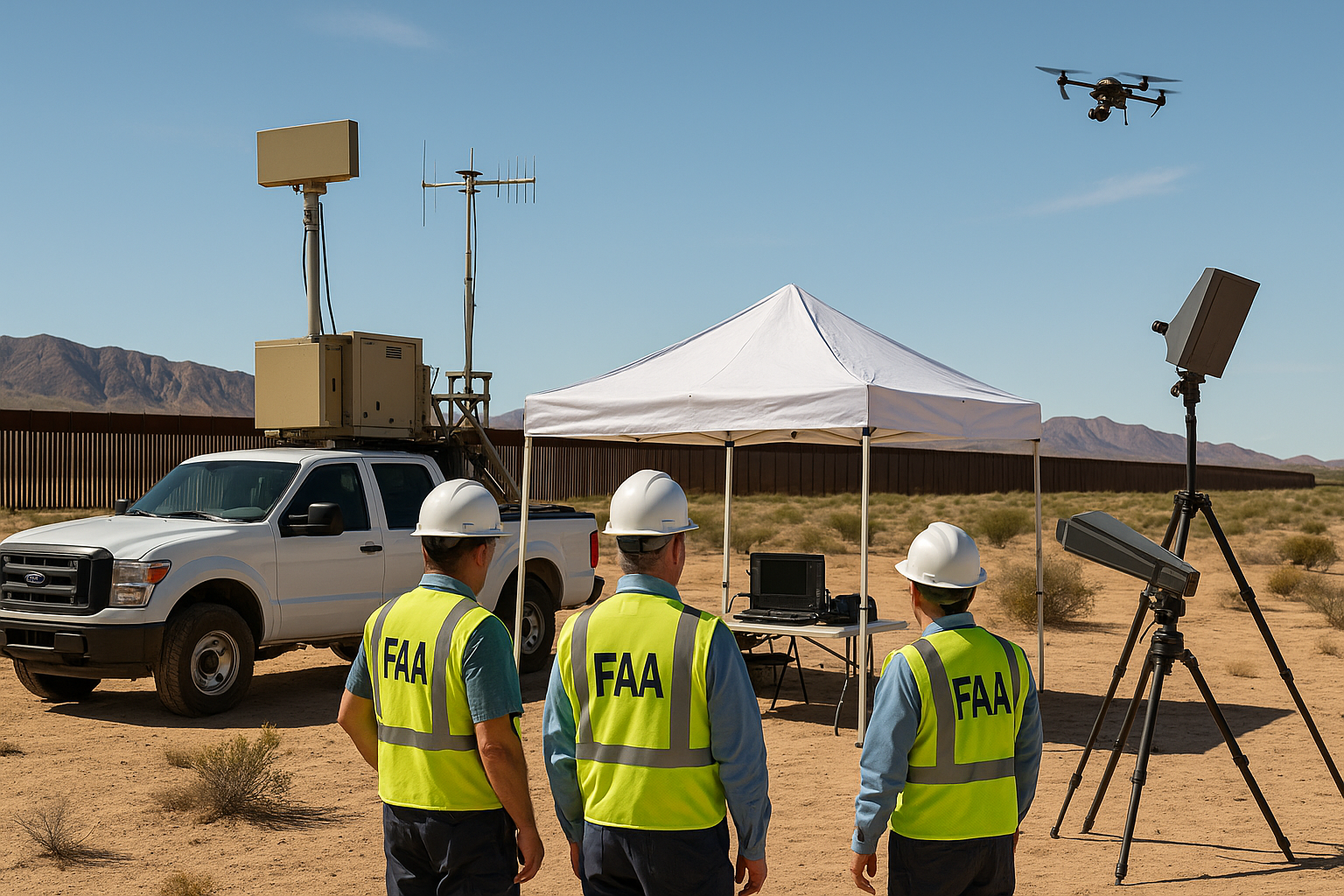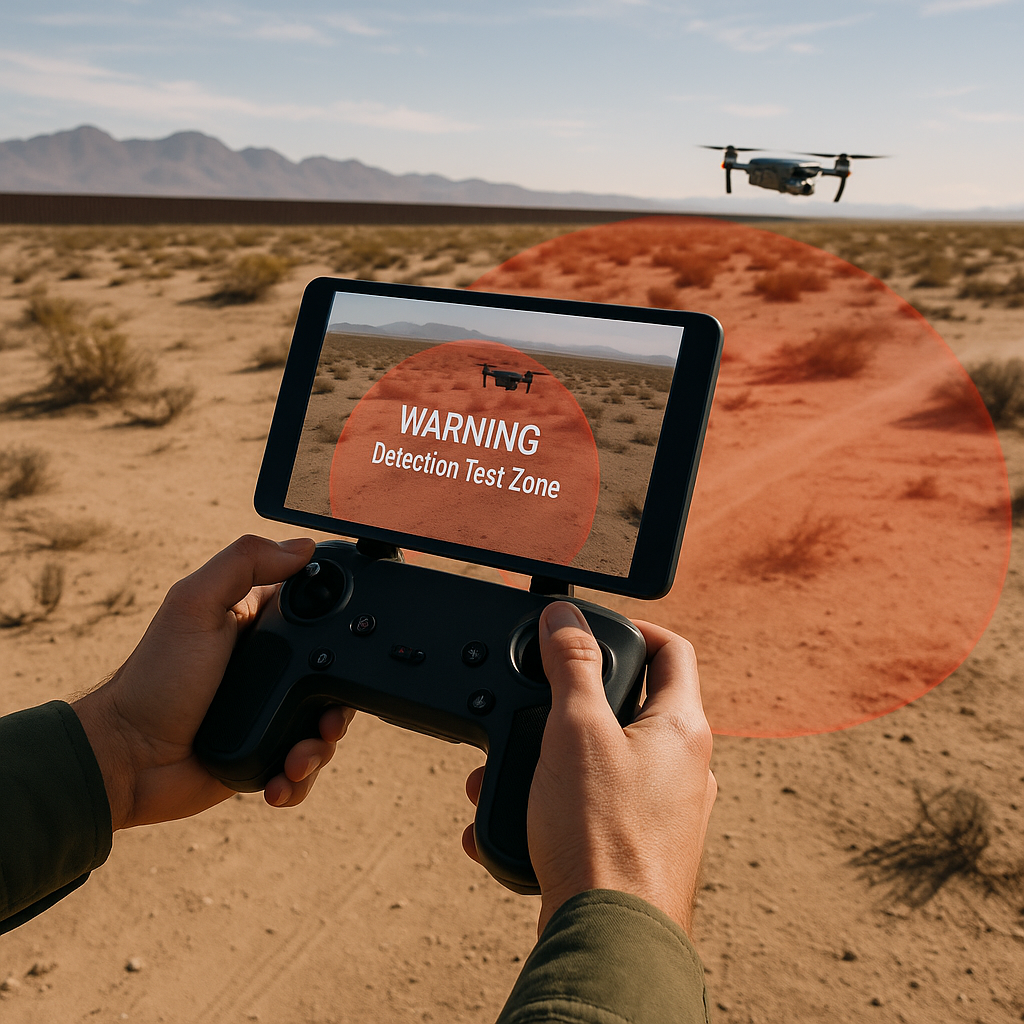FAA Launches Drone Detection Test Near Santa Teresa, NM | El Paso Drone Alert
FAA drone test near Santa Teresa: What El Paso pilots should know.

Big news for drone pilots in the Borderland: the FAA has launched a high-profile drone detection operation near Santa Teresa, NM — just west of El Paso. Running from June 16 to June 27, 2025, the test will involve over 100 drones and marks a major step in the FAA’s push to advance unmanned aircraft safety and enforcement.
If you fly drones in the El Paso region — for business, content creation, or hobby use — this test could affect where and how you operate. While no official flight restriction (TFR) has been issued, the FAA strongly advises pilots to avoid the area during this testing period to prevent interference.
In this post, I’ll explain what the FAA is testing, why it matters, and what local drone operators should do to stay safe and fully compliant.
Why the FAA Is Testing Drone Detection Outside of Airports
The FAA chose Santa Teresa for this drone detection test because it offers a real-world setting beyond controlled airport environments. By running the operation in open desert airspace, the agency can evaluate how drone detection systems work in less predictable conditions — closer to what drone pilots experience every day.
These off-airport tests help the FAA collect valuable data on how well detection tools track drone activity in wide-open areas. The goal? To build systems that work not just at major airports, but also in cities, rural zones, and border regions like El Paso. As drone usage grows, versatile monitoring is key to safe and scalable airspace integration.
Why El Paso Drone Pilots Should Pay Attention to the FAA Test Near Santa Teresa
If you're flying drones in the El Paso area this week, this FAA drone detection test near Santa Teresa is something you cannot ignore. It is not just a federal experiment — it could influence how airspace is managed in our region moving forward.
What the Test Means for Local Airspace
While there's no Temporary Flight Restriction (TFR) in place, the FAA has asked pilots to voluntarily avoid the test area. Why? Because extra drone traffic can interfere with data collection, and that can compromise the entire purpose of the test.
During the test window, expect increased drone activity and possible airspace coordination efforts from test officials. Commercial operators and recreational pilots alike should adjust flight plans and stay clear of the Santa Teresa zone.

No TFR — So Why Stay Away?
The absence of a formal TFR does not mean you are in the clear. The FAA's recommendation carries weight — and ignoring it could result in attention you do not want as a drone pilot.
By giving the test area space, you are showing that El Paso drone pilots take airspace safety seriously. It also helps maintain your standing with the FAA as they observe how communities respond during critical tests.
What This Reveals About FAA Priorities
The FAA is clearly moving toward tighter drone oversight, and tests like this one are shaping the tools and rules of tomorrow. By investing in detection tech now, the agency is preparing to manage more drones in more places — from cities to rural zones like ours.
Staying informed today means staying ahead of the curve tomorrow.
Can You Still Fly Your Drone Near Santa Teresa? Here’s the Real Answer
Technically, yes — drone flights near Santa Teresa are not banned. But during the FAA’s detection test (June 16–27), the smart move is to stay clear. Pilots should follow FAA recommendations to avoid interference, reduce risk, and stay in good standing.
FAA Guidance for Recreational and Commercial Pilots
During the test period, the FAA strongly recommends:
- Avoid flying near the Santa Teresa test zone to prevent interference.
- Monitor NOTAMs and FAA updates for changes in airspace status.
- Always maintain visual line-of-sight (VLOS) to ensure compliance.
These guidelines help protect the integrity of the test — and keep you flying safely and legally.

Why Avoiding Interference Matters
Flying too close to the test zone could disrupt FAA operations and lead to penalties or investigations. Even unintentional interference could raise red flags with the agency. Respecting the temporary test zone helps protect your flight privileges and supports safer skies for everyone.
Tools for Checking Airspace and NOTAMs
Situational awareness is essential during the FAA’s drone detection test. Use these tools to stay updated and avoid restricted areas:
- FAA NOTAM Search Tool – Check for official notices and airspace alerts
- Aloft Air Aware App – View real-time drone airspace conditions and alerts
- FAA DroneZone – Manage Part 107 certificates, waivers, and registration
- UAS Facility Maps – See controlled airspace and LAANC authorization zones
These tools help drone pilots stay compliant, avoid interference, and operate safely during the Santa Teresa test window.

What This FAA Test Tells Us About the Future of Flying Drones
The FAA’s drone detection test near Santa Teresa is not just a local event — it’s a preview of where drone operations are headed. For drone pilots in El Paso and across the industry, understanding these trends is key to staying ahead of upcoming changes.
Detection Tech and Drone Tracking Trends
This test highlights a growing national focus on drone tracking and real-time detection systems. As drones become more common, the FAA is leaning into technologies that monitor airspace activity with greater precision.
The Santa Teresa operation is helping the FAA evaluate how detection tools perform in open, real-world environments — and those results will likely guide how future drone tracking systems are rolled out nationwide.
Impacts on Privacy, Compliance, and Enforcement
With smarter detection comes new questions: How will data be used? Will enforcement get stricter? What about privacy?
As detection systems evolve, the FAA and industry leaders will need to balance safety with privacy concerns. Tests like this one help shape those policies — and give pilots a preview of how enforcement and compliance expectations may change.
What This Could Mean for Pilots in West Texas and Southern NM
The Borderland could be one of the first regions to feel the effects of these changes. If the FAA moves forward with more detection deployments, drone pilots in West Texas and Southern New Mexico might see tighter monitoring, stricter reporting rules, or updated authorization zones.
Staying informed now gives you a head start. Pilots who follow these developments and adapt early will be better prepared for whatever the next phase of drone regulation brings.

FAQs: Flying Drones Safely During the FAA’s Santa Teresa Test
When is the FAA drone detection testing happening?
The FAA's drone detection test is scheduled for June 16 to June 27, 2025.
Where exactly is the test being conducted?
The test is being conducted near Santa Teresa, New Mexico, just west of El Paso. The location is close to the Santa Teresa Jetport, the U.S.–Mexico border, and the Rio Grande Speedway in southern Doña Ana County.
Is there a flight restriction in place?
There is no official Temporary Flight Restriction (TFR), but the FAA urges all pilots to avoid the area during the test.
Will pilots be penalized for flying nearby?
While not illegal, flying near the test area may result in unwanted attention or complications, especially if it interferes with data collection. It’s best to steer clear.
How many drones are being used in the test?
The operation involves over 100 drones, including commercial off-the-shelf systems and larger unmanned aircraft.
What are the goals of the test?
The FAA aims to assess and improve drone detection technologies, ensuring safer integration of drones into U.S. airspace.
Should commercial drone pilots in El Paso change their flight plans?
Yes. Pilots should adjust routes and avoid operations west of El Paso near Santa Teresa during the test window to stay safe and compliant.

Wrap-Up: What Local Pilots Should Take Away From This Test
Stay Informed, Fly Smart
Understanding the scope and purpose of this test helps you avoid disruptions and stay within FAA guidelines. Staying proactive keeps your operations safe and legal.
Watch for Future FAA Announcements
This is not a one-time event. Future drone detection testing — and policy shifts — are likely. Monitor FAA updates and NOTAMs regularly to stay ahead.
Need Airspace Guidance? Contact From Above Droneworks
From Above Droneworks is here to help. If you need support navigating airspace rules, test zones, or FAA compliance, contact us directly. As El Paso’s trusted drone experts, we help pilots stay sharp, safe, and operational.
Sources & Attribution
This article is based on FAA publications and verified local media coverage of the drone detection test near Santa Teresa, New Mexico, in June 2025. The FAA has encouraged drone pilots to avoid the testing area to preserve the integrity of ongoing operations and airspace safety.
From Above Droneworks remains committed to sharing accurate, government-sourced information to help drone pilots in West Texas and Southern New Mexico stay informed and compliant.
🔗 Official Sources:
- FAA Newsroom – Drone Detection Testing: A Step Towards Safer Skies
https://www.faa.gov/newsroom - FAA DroneZone – Pilot registration, waivers, and airspace tools
https://dronezone.faa.gov - FAA UAS Integration Office – Policies and regulations for UAS operations
https://www.faa.gov/uas - FAA NOTAMs Portal – Check active airspace advisories
https://notams.aim.faa.gov - KTSM 9 News (2025). FAA conducts drone detection testing near Santa Teresa
https://youtu.be/JtfjG4sv31g?si=d5U4i-38ngUVx3u6
Disclaimer: This content is provided for informational purposes only. For official guidance or policy updates, visit FAA.gov.
Last updated: June 19, 2025

